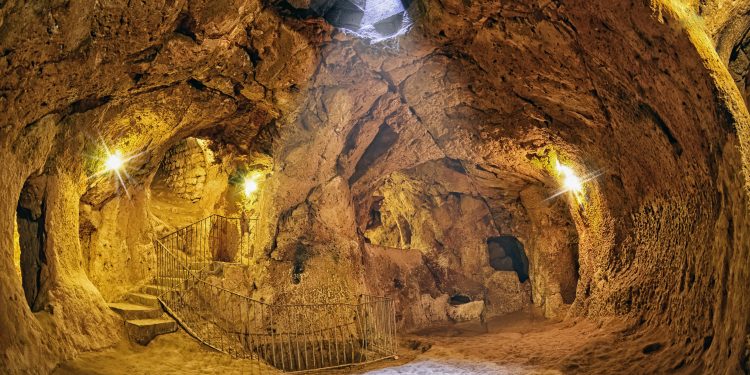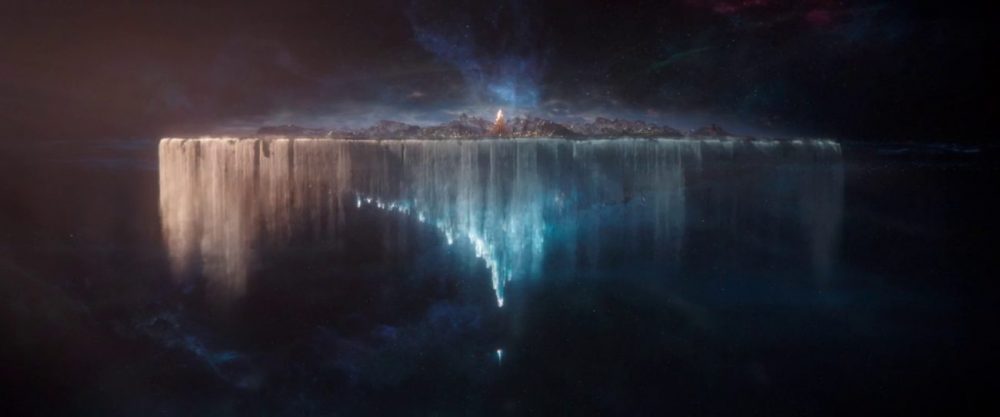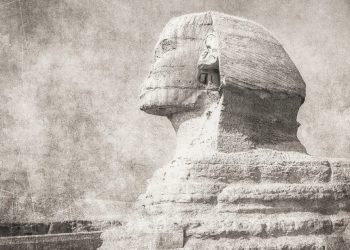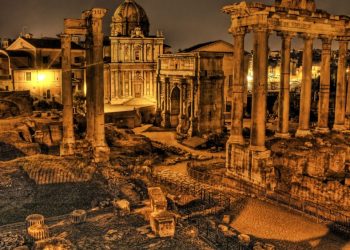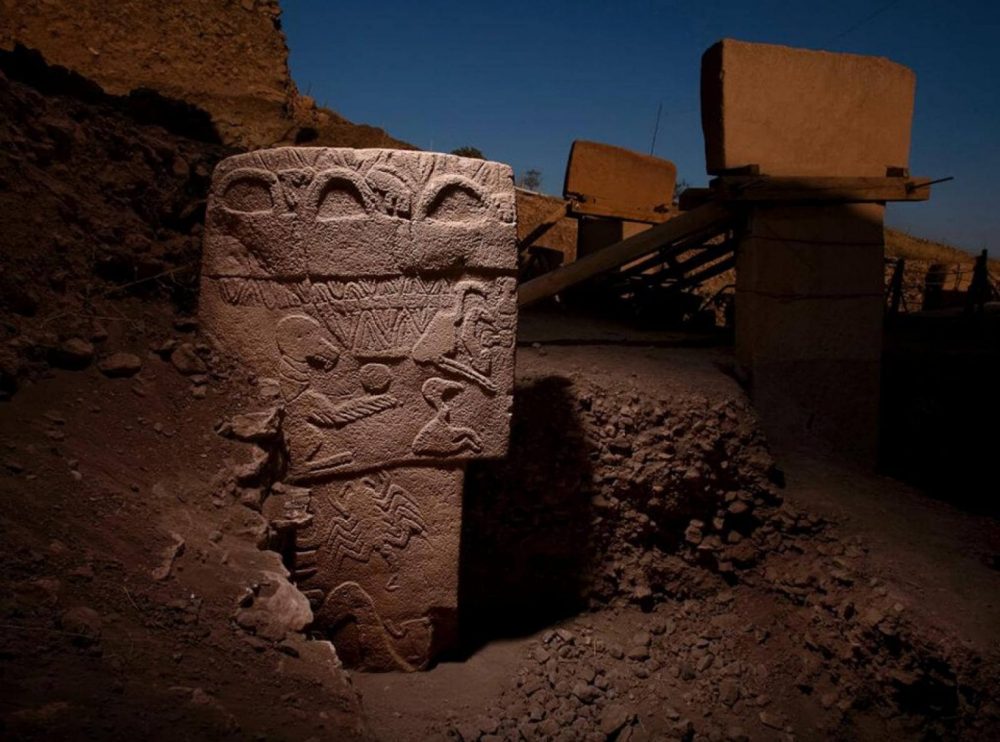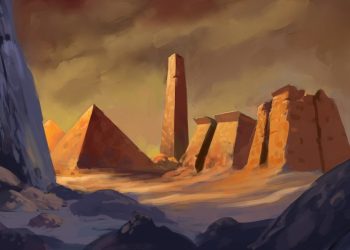It takes time for your eyes to adjust underground. In Derinkuyu, even artificial light falls strangely against the rough-cut walls. The carved tunnels narrow and widen at irregular intervals. Stone staircases descend in switchbacks. Air drifts through vertical shafts. In places, the space feels close and silent. In others, it carries a low, natural echo. There is no sunlight here, but there is architecture. And now, there is sound.
More than 60 meters below the surface of central Turkey, the remains of Derinkuyu form one of the most complex underground settlements in the world. The city reaches down seven levels, with chambers for sleeping, cooking, worship, and gathering. At its height, it may have held as many as 20,000 people. What was once hidden as a defensive structure has become one of the region’s most studied archaeological sites. Now, thanks to new work by Sezin Nas, a researcher at Istanbul Galata University, its sound is also being reconstructed.
Nas specializes in interior architecture and acoustic environments. She has created a 3D virtual soundscape of Derinkuyu based on its spatial forms and material properties. Her focus was not on modern reverb or sonic art, but on physical acoustics, how stone, void, and structure shaped what people heard as they moved through the city.
Reconstructing Derinkuyu’s acoustic design
To build the sound model, Nas selected three spaces for detailed analysis: a church, a domestic living area, and a kitchen. These areas were chosen for their function and variation in spatial volume. Using architectural surveys and acoustic simulation tools, she mapped the surfaces, volumes, and materials. Then, she modeled how sounds, voices, tools, footsteps, fire, would behave in each room.
Derinkuyu was not silent. It was carved from soft volcanic rock called tuff, which absorbs some frequencies but carries others. Ventilation shafts, often mistaken for simple air ducts, served as both airflow systems and vertical communication lines. Nas emphasized this dual function. A single shaft could move both air and sound across levels, linking different parts of the city without direct sightlines.
These design features were not secondary. They were structural. In Nas’s model, sound is shown to travel in ways that mirror social and architectural priorities. Openings near cooking areas allowed for shared sensory cues. Narrow passageways between levels blocked sound, creating acoustic boundaries that likely shaped patterns of privacy and control.
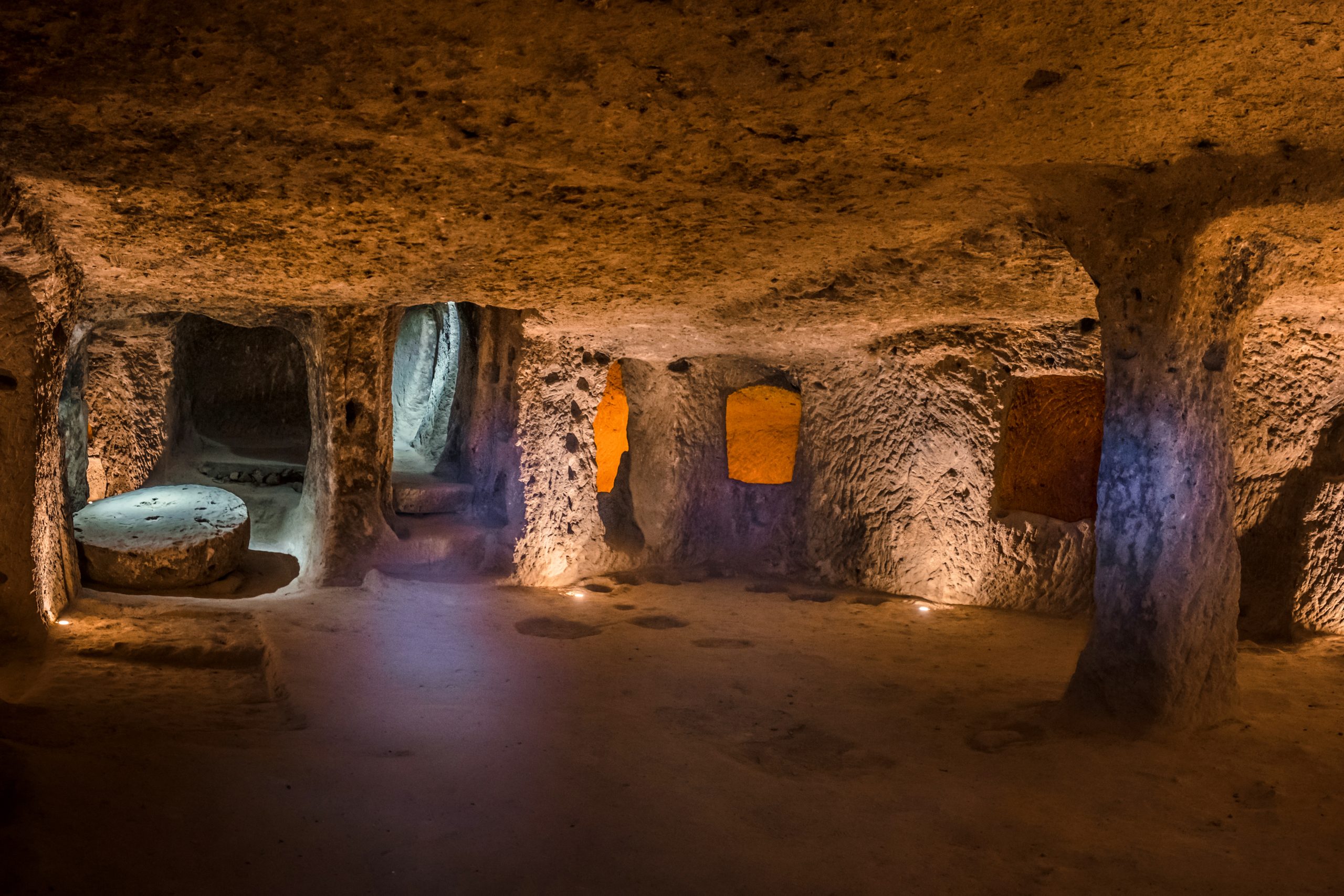
Listening to a buried city
Derinkuyu was not the only underground city in Cappadocia, but it is the deepest and most spatially complex. Most of the surviving tunnels were cut by hand during the Byzantine period, though earlier phases may date back even further. The site’s layout reflects both practical and defensive concerns. Entrances were concealed. Rolling stone doors could be used to block off corridors. Livestock was housed below ground. Water was sourced from wells that reached deep into the rock.
For centuries, these spaces were known locally but remained undocumented by formal archaeology. Since their rediscovery in the 1960s, sites like Derinkuyu have been measured, mapped, and visited by millions of tourists. Yet until Nas’s work, few efforts had been made to study how they sounded when they were inhabited.
Nas presented her findings at the 188th Meeting of the Acoustical Society of America in May 2025. She described Derinkuyu as an “interior environment on an urban scale,” distinct from open-air soundscapes typically studied in urban acoustics. By reconstructing its sonic behavior, she argues, researchers can better understand how residents used space, communicated, and structured their routines.
The soundscape is not a guess. It is built from data. Nas’s model incorporates not only geometry but also human behavior. Different rooms produce different reverberation times. Kitchens absorb more sound due to their lower ceilings. Churches echo longer. In between, passageways create acoustic transitions that affect how one space flows into another.
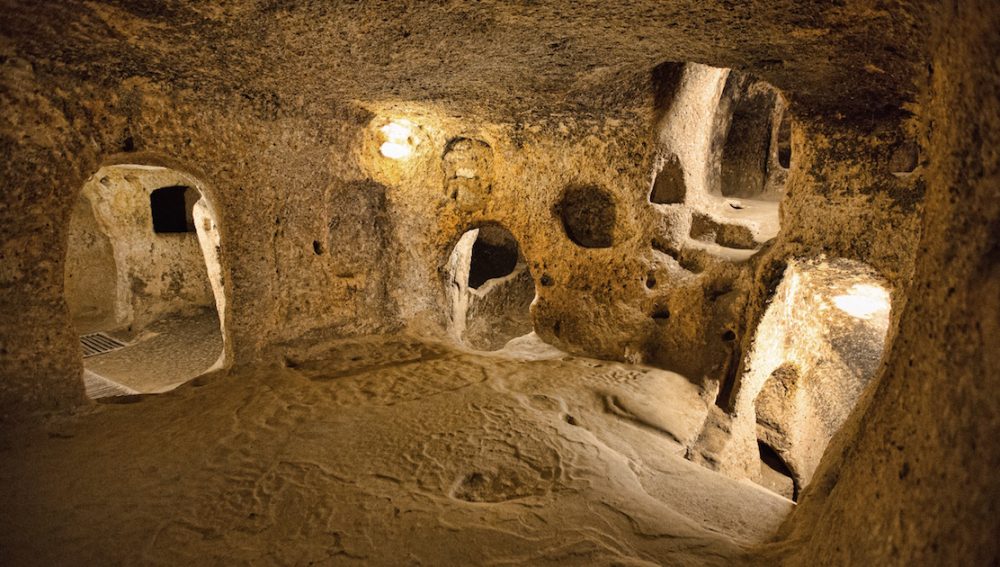
History cut into stone
The region of Cappadocia, where Derinkuyu is located, has long been shaped by geology. The area’s soft volcanic substrate allowed for extensive excavation. Entire villages were carved directly into rock faces. By the early medieval period, Christians fleeing persecution expanded these spaces into multi-level underground complexes.
Derinkuyu may have been occupied intermittently over many centuries. Archaeological evidence points to phases of construction and reuse, often tied to periods of threat. Its layout includes features like defensive bottlenecks, food storage rooms, and central gathering spaces. Everything about it was designed to support life under siege.
The physical conditions underground are stable. Temperatures remain constant year-round. The architecture protects against both heat and cold. But living underground also shaped experience in other ways. Light was scarce. Sound carried differently. The absence of wind and open air created an environment defined by enclosed resonance. Nas’s model captures those differences in a way that drawings and photographs cannot.
A tool for future design
Beyond archaeology, Nas sees potential for applying this work to modern planning. As urban development pushes into underground infrastructure, understanding how sound behaves in buried environments becomes increasingly important. Most studies of urban acoustics focus on surface cities. Underground spaces are treated as isolated exceptions.
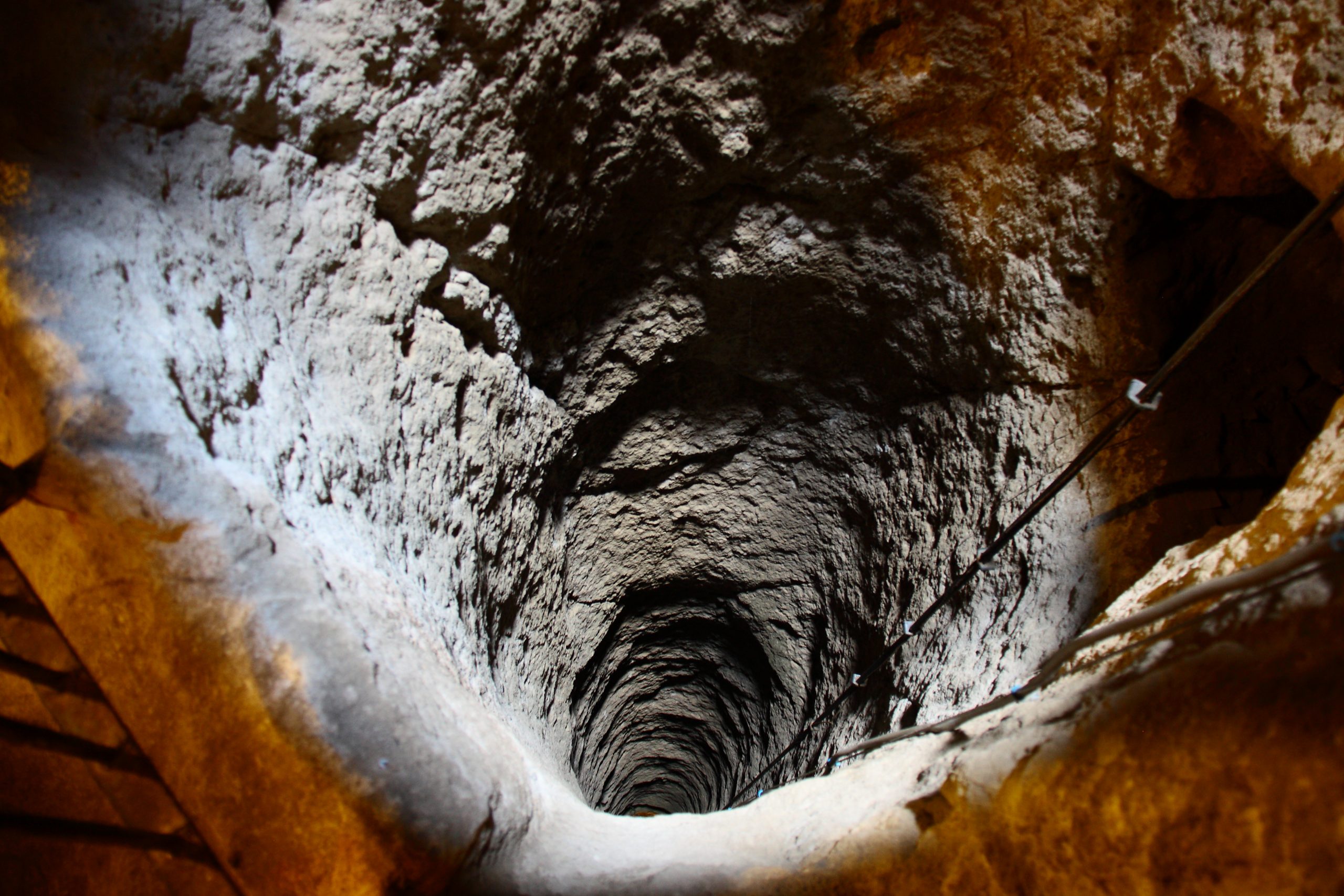
Derinkuyu offers a counterexample. It was not a tunnel or a bunker. It was a functioning urban environment, carved to support collective life. Its soundscape reflects that design. Nas argues that acoustic modeling can contribute to both historical preservation and future construction.
More broadly, the project adds a new dimension to how we study ancient environments. Architecture is often recorded visually. Sound is harder to capture. But for people living in places like Derinkuyu, sound was part of how space was navigated, understood, and controlled. Children learned where they were by the echo of a footstep. Adults heard voices through shafts before they saw faces. The city’s structure taught people how to listen.
What Derinkuyu reveals
The 3D reconstruction of Derinkuyu is not a re-creation of ancient life. It doesn’t guess what people were thinking or feeling. What it does is document how space worked, how it changed sound, and how those changes shaped experience.
Sound was never separate from architecture. It was one of the ways people understood where they were. A child would know a main room by the way it echoed. A parent might hear a pot drop two levels above. The structure itself trained people to listen.
This kind of work is rare. Archaeology usually records what can be drawn or photographed. Sound is harder. It fades. But in places like Derinkuyu, it never really disappeared. The shape of the rooms, the angles of the walls, and the width of the shafts still control how noise moves. That information is still there, waiting to be measured.
By treating sound as something worth studying, not just as an effect, but as part of how a space functioned, Nas adds something to the record that was missing. Not a story, not a theory, but a way to hear a place that once stayed quiet to the outside world. Fascinating!



